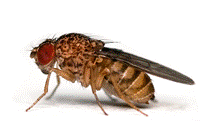Papers in the Biological Sciences

Lawrence G. Harshman Publications
Document Type
Article
Date of this Version
11-20-2007
Citation
PNAS, November 20, 2007, vol. 104, no. 47, pp. 18577–18582
doi: 10.1073/pnas.0705441104
Abstract
Sexual selection drives faster evolution in males. The X chromosome is potentially an important target for sexual selection, because hemizygosity in males permits accumulation of alleles, causing tradeoffs in fitness between sexes. Hemizygosity of the X could cause fundamentally different modes of inheritance between the sexes, with more additive variation in males and more nonadditive variation in females. Indeed, we find that genetic variation for the transcriptome is primarily additive in males but nonadditive in females. As expected, these differences are more pronounced on the X chromosome than the autosomes, but autosomal loci are also affected, possibly because of X-linked transcription factors. These differences may be of evolutionary significance because additive variation responds quickly to selection, whereas nonadditive genetic variation does not. Thus, hemizygosity of the X may underlie much of the faster male evolution of the transcriptome and potentially other phenotypes. Consistent with this prediction, genes that are additive in males and nonadditive in females are overrepresented among genes responding to selection for increased mating speed.
Supplementary material is attached below.
Dataset 1
Harshman 2007 PNAS Simpler mode of inheritance of transcriptional SUPP MAT D2.pdf (458 kB)
Dataset 2
Harshman 2007 PNAS Simpler mode of inheritance of transcriptional SUPP MAT D3.pdf (2858 kB)
Dataset 3
Harshman 2007 PNAS Simpler mode of inheritance of transcriptional SUPP MAT F4.pdf (230 kB)
Figure 4
Harshman 2007 PNAS Simpler mode of inheritance of transcriptional SUPP MAT T2.pdf (20 kB)
Table 2
Harshman 2007 PNAS Simpler mode of inheritance of transcriptional SUPP MAT T3.xls (3031 kB)
Table 3 Excel
Harshman 2007 PNAS Simpler mode of inheritance of transcriptional SUPP MAT T4.pdf (22 kB)
Table 4
Harshman 2007 PNAS Simpler mode of inheritance of transcriptional SUPP MAT.pdf (21 kB)
Descriptions of supplementary material


Comments
© 2007 by The National Academy of Sciences of the USA. Used by permission.